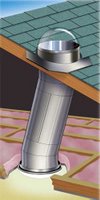Gray Russell gave his own alternative energy presentation recently in Bloomfield (photo)

Thursday's NJ Star Ledger has an interesting follow up to Al Gore's "An Inconvenient Truth" by reporter Phillip Reade:
Gray Russell has seen Al Gore's global-warming flick "An Inconvenient Truth."
The film starring the former vice president has been pulling in record-breaking audiences and filling up seats at Montclair's Claridge Theater... "I think it's the issue of our time, I really do," said Russell, the hybrid Toyota Prius-driving environmental coordinator.
This summer, Rosdaria Matos and others will be going door to door to raise the pressure on Corzine to follow through on NJPIRG's agenda.
The group's solution checklist includes doubling rebates for solar and other renewable energy; building an 80-turbine, 350 megawatt wind-energy pilot project offshore and enacting a gas-guzzler fee on vehicles that get 22 miles per gallon or less, with the revenues used as incentives for fuel efficiency.
Yesterday, Brendan Gilfillan, a spokesman for the governor, pointed to Corzine's record in the U.S. Senate, including his "yea" votes on caps on greenhouse emissions -- which failed -- and his vote against an energy-bill amendment that he said did not go far enough to reduce emissions.
"Despite the lack of leadership on the federal level, Gov. Corzine remains committed to doing what he can in the state to address this global challenge," Gilfillan said.
Last week, in its second weekend, Gore's documentary broke into the Top 10 with $1.33 million in ticket sales, even though it was playing in only 77 theaters. It draws parallels between rising temperatures and their resulting catastrophic hurricanes and cycles of drenching floods and bone-drying drought.
Montclair was chosen, in part, because it is the first New Jersey town to win the Board of Public Utilities' Clean Energy Leadership Award. "We're walking the walk, not just talking the talk," Russell said of Montclair's "green" reputation.
Montclair has traffic lights with LED, or light-emitting diodes, saving $10,000 a year in energy costs; has a small fleet of municipal vehicles powered by compressed natural gas; and is about to build a school with solar panels and a geo- thermal heating and cooling system.
In the autumn, Russell joined an Earthwatch team of scientists on Canada's northern reaches, near the Arctic Circle, to study the permafrost, moisture that lies below the ground and, when fully frozen, deflects the sun's heating rays.
That permafrost, in places, is now forming puddles, and the sun's heat is instead absorbed by the water, speeding up the melting and releasing greenhouse gases in the process.
"The permafrost, for the first time in 10,000 years, is thawing," he said.
 Canal Path Along Delaware River
Canal Path Along Delaware River


















